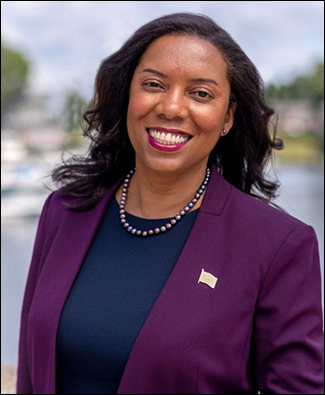By Jim Ellis — Wednesday, July 26, 2023
House
RI-1: Matos’ Signatures Undergoing Greater Scrutiny — Earlier, we reported that Lt. Gov. Sabina Matos (D), a candidate in the special election to replace resigned Rhode Island Congressman David Cicilline (D), is under scrutiny about the legality of her petition signatures. Now, the situation has become more serious. Yesterday, the Rhode Island Board of Elections members voted 5-1 to investigate her petition filing.The Board will order research on each of the submitted petition signatures to ensure the required number of legal entries are present. If short of the required 750 number, Matos would be disqualified from participating as a candidate in an election where she appears as the clear leader. A total of 12 Democrats have preliminarily been approved for the special election ballot. The Democratic primary, winning of which is tantamount to claiming the seat, is scheduled for Sept. 5.
CA-9: Candidate Withdraws; Endorses — Pastor Brett Dood, who had previously declared his congressional candidacy to compete against Rep. Josh Harder (D-Tracy), has announced that he will end his campaign. Dood then said he would support Stockton Mayor Kevin Lincoln (R) who became a congressional candidate last week. Republicans now appear to be uniting behind Lincoln, meaning they will have a credible challenger against Rep. Harder in a district that can become competitive.
In 2021 redistricting, Rep. Harder fared poorly and moved into the 9th District to run after veteran Rep. Jerry McNerney (D) announced his retirement. Though Rep. Harder had less than 28 percent of the crossover population from his previous 10th District, he still recorded a 55-45 percent victory over San Joaquin County Supervisor Tom Patti (R) but needed to outspend him by a 6:1 ratio in order to do so.
The FiveThirtyEight data organization rates CA-9 as D+8. Though in an underdog position, this is the type of seat Republicans need to put in play to protect their small majority.
NY-4: Dem Battle Brewing — There was no doubt that freshman Rep. Anthony D’Esposito (R-Island Park) was going to face a major re-election battle in 2024. He was the 2022 election cycle’s big upset winner in defeating former Hempstead Town Supervisor Laura Gillen (D) in a district that the FiveThirtyEight data organization rates as D+10. Now, however, it appears that Gillen, who has announced she will return for a rematch, will face her own major challenge in the Democratic primary.
Though he has not yet made an official announcement, two-term state Sen. Kevin Thomas (D-Levittown) has filed a congressional committee with the Federal Election Commission. Expect this race to draw significant national political attention from beginning to end.
Governor
Kentucky: GOP Poll Shows Closing Race — The Republican State Leadership Committee released a new Public Opinion Strategies survey (July 19-20; 500 Kentucky registered voters; live interview) showing a closing of the 2023 governor’s race between incumbent Gov. Andy Beshear (D) and Attorney General Daniel Cameron (R). The ballot test finds the governor holding only a 49-45 percent edge. The poll counters another POS poll from late June for a public interest group that posted Gov. Beshear to a 52-42 percent lead. The election is scheduled for Nov. 7.
New Hampshire: Former US Sen. Ayotte Enters Open Gov Race — Former New Hampshire Sen. Kelly Ayotte (R), who won a landslide 2010 victory with a 60-36 percent spread but lost her seat six years later to current incumbent Maggie Hassan (D) in a razor-thin 49-48 percent margin, announced Monday that she will return to active politics with a run for governor. Four-term incumbent Chris Sununu (R), who is not seeking a fifth two-year term, leaves behind what promises to be a hotly contested general election as well as two competitive party primaries.
In addition to Sen. Ayotte entering the governor’s race, former state Senate President and 2022 US Senate candidate Chuck Morse is also an announced Republican candidate. The Democrats already feature a race for their party nomination between Manchester Mayor Joyce Craig and Executive Councilor Cinde Warmington.


